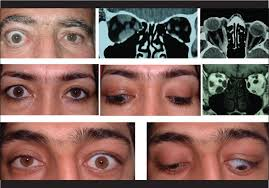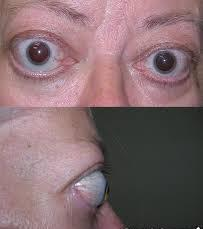 What is Graves’ disease?
What is Graves’ disease?
Graves’ disease is a disorder of the immune system that affects thyroid, skin and eye in the body. Though it may occur in any age in both the sexes, it is generally more common in females in the age group 20 to 60 years.
Normally the immune system in the body makes antibodies, which have a role in protecting the body from viruses, bacteria and other foreign substances. In graves’ disease the immune system mistakenly attacks the thyroid gland, eyes and skin of the lower limb, causing the symptoms.What are the manifestations of graves’ disease?
As explained above, this disease affects thyroid gland, skin and eyes. Thyroid is a gland located in the neck region and is responsible for secreting a hormone that controls the metabolism and growth of the body. In graves’ disease the secretion of thyroid gland is generally increased by the antibodies, leading to a condition known as hyperthyroidism. The symptoms of this condition are:
-
-
-
- Increase in appetite
- Loss of weight
- Poor heat tolerance
- Irregular heart beat, pounding of heart
- Changes in menstrual pattern
-
-
Some people with Graves’ disease suffer from an irritating skin condition. Skin over the shins appears red and swollen. The top of the feet also may be affected in this way.
How can this disease affect the eyes?
 Graves’ disease also affects the eye and leads to a condition known as Graves’ ophthalmopathy. Eye symptoms and hyperthyroidism symptoms usually appear within 18 months of each other. It generally involves both eyes, though even one eye may be involved.
Graves’ disease also affects the eye and leads to a condition known as Graves’ ophthalmopathy. Eye symptoms and hyperthyroidism symptoms usually appear within 18 months of each other. It generally involves both eyes, though even one eye may be involved.
The antibodies act on the tissues behind the eyeball. These get inflamed and attract and hold water. This leads to swelling of tissues and muscles, causing the eyeball to protrude forwards and also leads to some decrease in mobility of the eyeball. The symptoms of this condition therefore are:
-
-
-
- Proptosis (protrusion of the eyeball forwards)
- Widening of the space between the eyelids
 Redness of the eyes
Redness of the eyes- Excess tearing and discomfort
- Blurring or double vision
- Decreased movements of eyes
-
-
Can it cause serious damage to the eyes?
Besides causing inconvenience in form of decreased movement and double vision, graves’ ophthalmopathy may also lead to serious vision threatening complications. These are:
- Damage to the cornea (the transparent portion of the eye): Protrusion of the eyeball and the widening of the opening of the eyelids leads to inadequate closure of the eyes during blinking and sleep. This leads to drying up and opacification of the cornea.
- Damage to the optic nerve: The swelling in the tissues behind the eyeball may compress the optic nerve as it passes through it. This may lead to a serious loss of vision if not treated promptly.
What is the treatment?
First of all the thyroid status is determined and is treated accordingly, based on whether the thyroid hormone levels are high or normal or even low. The treatment for the eye condition depends upon the severity of the disease as well as the stage of the disease. The patient may need one or a combination of the following treatment options:
Is surgery also required?
Depending upon the condition of the eyes, the ophthalmologist may advise a surgery. The following surgeries are done for this condition:
- Orbital decompression surgery: In this surgery, the bone between the orbit (the cavity holding the eyeball) and the surrounding sinuses (air spaces next to the orbit) is removed. This provides more space to the swollen tissues behind the eye and thus decreases the protrusion of eyeballs and also the pressure on the optic nerve.
- Eye muscle surgery: The involvement of the muscles of the eyes may lead to misalignment of the eyes and thus lead to double vision. If the prisms in the glasses can not relieve the symptoms, surgery may be required. This surgery aims to correct the misalignment by operating on the muscles of the eye. The aim is to give single vision in the straight-ahead gaze and the downgaze (as for reading). It may require more than one surgery to properly align the eyes. This surgery is undertaken only after the misalignment has been constant and is not changing.
- Eyelid surgery: In Graves’ ophthalmopathy the eyelids open more widely. The surgery on eyelids is undertaken to correct this defect.
If the eye requires all these three surgeries, the sequence is orbital decompression, eye muscle surgery and then eyelid surgery.
